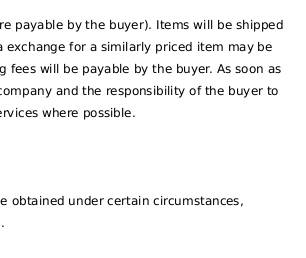
Judea, 103-76 BC, Graded VF-20, Alexander Jannaeus, Lepton/Widow's Mite,Coins of the Bible
Check my rate
View locations
| Main centres: | 1-3 business days |
| Regional areas: | 3-4 business days |
| Remote areas: | 3-5 business days |

| Main centres: | 1-3 business days |
| Regional areas: | 3-4 business days |
| Remote areas: | 3-5 business days |
Judea
Alexander Jannaeus
103 - 76 BC
VF - 20
Judaean Widow's Mite or Lepton Coin, Slabbed and Graded




TAlexander Jannaeus (also known as Alexander Jannai/Yannai; Hebrew: ××××¡× ×ר ×× ××), king of Judea from (103 BC to 76 BC), son of John Hyrcanus, inherited the throne from his brother Aristobulus I, and appears to have married his brother's widow, Shlomtzion or "Shelomit", also known as Salome Alexandra, according to the Biblical law of Yibum
His likely full Hebrew name was Jonathan; he may have been the High Priest Jonathan, who established the Masada fortress. Under the name King Yannai, he appears as a wicked tyrant in the Talmud. He is among the more colorful historical figures, despite being little known outside specialized history. He and his widow (who became queen regnant after his death) had substantial impact on the subsequent development of Judaism.
Jannaeus expanded the Hasmonean Kingdom and established the city of Gamla in 81 BCE as the capital for what is now the Golan Heights.
The coinage of Alexander Jannaeus is characteristic of the early Jewish coinage in that it avoided human or animal representations, in opposition to the surrounding Greek, and later Roman types of the period. Jewish coinage instead focused on symbols, either natural, such as the palm tree, the pomegranate or the star, or man-made, such as the Temple, the Menorah, trumpets or cornucopia.
Coinage of Alexander Jannaeus
Alexander Jannaeus was the first of the Jewish kings to introduce the "eight-ray star" or "eight-spoked wheel" symbol, in his bronze "Widow's mite" coins, in combination with the widespread Seleucid numismatic symbol of the anchor. These coins are thought to be the ones referred to in the Bible in Luke 21:1-4:
"and Jesus sat over against the treasury, and beheld how the people cast money into the treasury; and many that were rich cast in much. And He called unto him His disciples, and saith unto them, Verily I say unto you, that this poor widow hath cast more in, than all they which have cast into the treasury: For all they did cast in of their abundance; but she of her want did cast in all that she had"
Depending on the make, the star symbol can be shown with straight spokes connected to the outside circle, in a style rather indicative of a wheel. On others, the spokes can have a more "flame-like" shape, more indicative of the representation of a star within a diadem.
It is not clear what the wheel or star may exactly symbolize, and interpretations vary, from the morning star, to the sun or the heavens. The influence of some Persian symbols of a star within a diadem, or the eight-spoked Buddhist wheel (see the coins of the Indo-Greek king Menander I with this symbol) have also been suggested. The eight-spoked Macedonian star (a variation of which is the Vergina Sun), emblem of the royal Argead dynasty and the ancient kingdom of Macedonia, within a Hellenistic diadem symbolizing royalty seem to be the most probable source for this symbol. The most likely explanation is that the symbol is a star encased in a diadem and it is a religious explanation. Biblical law forbids the making of graven images (Deuteronomy 4:16,23), yet the image of a monarch is a staple of Hellenistic coins. In place of an image of himself, therefore, it is likely that Alexander Jannaeus chose a star, in keeping with Numbers 24:17, “A star rises from Jacob, a scepter comes forth from Israel.” This verse generally was seen as a biblical support for monarchy (and specifically as support for a Davidic monarchy). Jannaeus, however, could have seen it as an image of his achievements. This is how the rest of Numbers 24:17 - 19 continue: The star, it says, “smashes the brow of Moab, the foundation of all children of Seth. Edom becomes a possession, yea, Seir a possession of its enemies; but Israel is triumphant. A victor issues from Jacob to wipe out what is left of Ir.” Considering Jannaeus’ conquests—creating a kingdom that rivaled those of David and Solomon and may have even exceeded those—the “star” envisioned in the prophecy of Balaam in Numbers was a perfect match for him.
The coin name in King James English is the widow's "mite". The proper Greek name is lepton for any coin of this sort with similar size. These were of the first, and most common, Jewish coins ever minted, dating from the time of Alexander Jannaeus, a descendent of Judas Maccabee. Jewish leptons often show defects of hasty mintage methods



 INTERNATIONAL CUSTOMERS WELCOME
INTERNATIONAL CUSTOMERS WELCOME 





